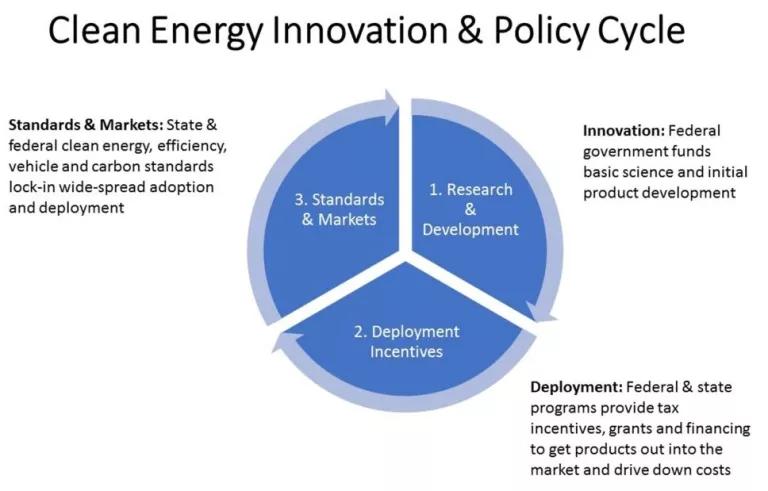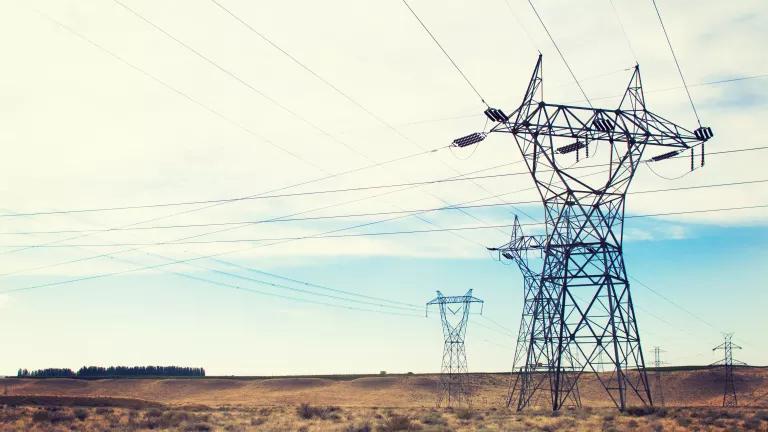Transform Transportation to Head Off Worst of Climate Change

As inflection points go, this is a troubling one: Transportation passed electricity generation to become the largest source of U.S. carbon pollution, the federal government said earlier this year.
In part, this is because our electric grid is getting cleaner. More wind and solar power and less coal equal lower emissions from electricity. But, tailpipe carbon pollution continues to rise, and it is long past time to put a halt to that trend. That’s why we are so excited to be a part of the 50x50 Commission on U.S. Transportation Sector Efficiency, which is releasing its recommendations today on how to halve energy use for transportation by 2050.
The commission, which was organized by the Alliance to Save Energy, is made up of representatives from automakers and electric utilities, cities and consumer groups, unions and environmental groups like ours. Rhea Suh, NRDC’s president, is one of 24 commissioners.
From the start, this diverse group united on a goal of cutting the energy used in U.S. transportation 50 percent by 2050 while meeting future mobility needs. It’s a bold but attainable, target—and by achieving it, we can lower transportation costs for families and businesses, improve our nation’s energy security, enhance our economic competitiveness, and protect the environment.
At NRDC, we have long recognized that the efficiency of our lightbulbs, refrigerators or electronics is our nation’s largest clean-energy resource, and one that is the cornerstone to helping us reduce the emissions causing climate change. The same is true on the transportation side. More efficient vehicles mean drivers can go further without filling up at the gas station, saving them money while reducing harmful carbon pollution.
The Right Moment
This is the right moment to plan this future because we’re on the verge of a transformational change in mobility. Ride-hailing apps are bringing a new convenience for millions of Americans. Electric vehicles, which are quickly growing in numbers, are more energy efficient, lowering operating costs. And autonomous vehicles are eventually going to reshape our daily routines, one day freeing our hands from the wheel.
Together, these technologies provide us with a chance to reinvent how we move people and goods. And if we get it right, we could use far less energy. But if we get it wrong, we could go backwards, use more energy and emit more pollution. We need coordination, smart policy, and a strategy for capitalizing on this opportunity.
The 50x50 Commission focuses its policy recommendations on three broad areas: transform, innovate and invest. These are ideas that we all can rally around. In fact, the mix of R&D, incentives and standards fits perfectly within the mix of policies that my colleague Derek Murrow has identified as key to pushing along innovative, low-carbon solutions:

So, what are those policies?
First, the commission supports “policies that improve the efficiency of all vehicle types, i.e., fuel economy standards, accelerating inefficient vehicle turnover, and encouraging interagency collaborations to advance key technologies.” At a time when the federal government is moving to halt progress on fuel economy for our cars and trucks, this is an important statement of support from a broad set of stakeholders. Without strong standards, automakers and their suppliers won’t have the incentive to make the commonsense upgrades to their vehicles. Regulatory certainty is absolutely essential to allow industry to make critical investments.
Second, the Electric Vehicle Tax Credit must be improved. One of the key federal policies to incentivize electric vehicle purchases is the $7,500 tax credit, but it is capped at the first 200,000 vehicles sold by each automaker. Some industry leaders are already nearing that cap and adjustments to the credit must be made to ensure that first-movers (and those who want to buy their cars!) aren’t penalized. The commission recommends the manufacturer-specific cap be replaced by an industry-wide phase-out once EV penetration reaches a certain level.
Third, the federal government must supply greater support for research and development in breakthrough technology as well as for demonstration and deployment (collectively for RDD&D). We’ve seen how RDD&D spending has cut costs and spurred deployment of solar and wind technologies. In addition, federal research investments helped bring down the price of lithium-ion batteries by 79 percent since 2010, which has enabled the electric-vehicle industry to expand. Thanks to declining costs and improved performance, cumulative U.S. EV sales are expected to reach 1 million by the end of 2018. But we can’t stop now. It’s reassuring that this panel agrees on the need for greater federal investment in accelerating innovation and deployment of new technologies for transportation and mobility.
Rhea Suh, the president of NRDC and a 50x50 commission member, summed it up best:
“Transportation represents our biggest source of carbon emissions, and now, more than ever, it’s important that this group has come to together with the common purpose to make our transportation options cleaner and greener.
“Automakers and utility executives, mayors and environmental advocates, we all recognize that cars and trucks need to get more efficient and our transport options grow. We must act now to spur Americans’ ingenuity for clean mobility.”
The 50x50 Commission’s full report, as well as additional information on the commission, is available at www.50x50transportation.org.



